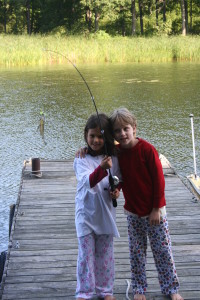We have much more to do and your continued support is needed now more than ever.
This Mother’s Day, Let’s Leave a Wildlife Legacy We Can Be Proud Of

As they’ve grown up, my children’s curiosity for the natural world has grown as well. They imagine what it would be like to swim with the gentle manatees—an animal their grandmother introduced them to through her beautiful encaustic paintings. Or see the puffins off the coast of Maine; or, if they’re fortunate, the polar bears far north in Canada.

Manatees are battling recurring red tides due to warmer waters. The puffins are struggling to feed their young consistently because of shifting fish populations. And the polar bear…well, we know sadly that without ice, they starve and drown.

With your help, we can implement smart conservation policies in this country that will help protect the next generation of wildlife from the impacts of a changing climate, such as:
- Using and protecting the proven, existing laws to tackle carbon pollution
- Reducing fossil fuel use and rejecting expansion of dirty fuels
- Investing in wildlife-friendly clean energy
- Safeguarding wildlife and wildlife habitat
I want to leave a wildlife legacy for my children that I can be proud of. And I want to empower my children to be part of the solution. But I can’t do it alone. Here are some everyday actions that we all can take to create a better world for the next generation:
Climate Action Toolkit
1. Organize a tree planting. Neighborhoods, schoolyards, and places of worship are perfect places for tree plantings. Trees do more than provide shade. They provide food, water, shelter and places for wildlife to raise their young.
2. Restore our shorelines. From ducks to turtles, our beaches, dunes, and marshes are lifelines. They also are eroding due to extreme weather. Start an “adopt a shoreline” project, and encourage families, schools and businesses to join the effort.
3. Educate others. Teach friends, neighbors, and classmates about what we can do together to help animals, near and far.
![]() Join me in the call for climate action: speak up for reducing carbon pollution from our nation’s coal plants.
Join me in the call for climate action: speak up for reducing carbon pollution from our nation’s coal plants.





















